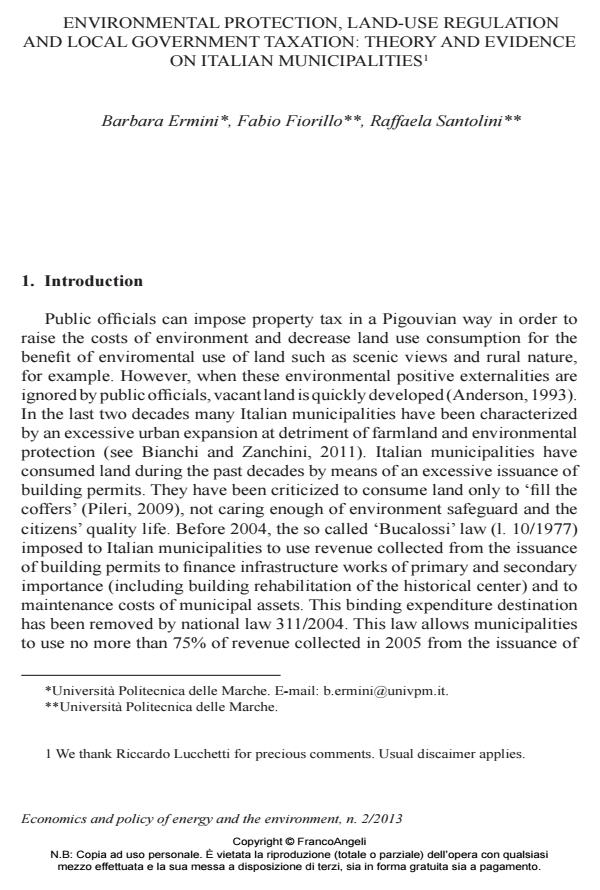Environmental protection, land-use regulation and local government taxation: theory and evidence on Italian municipalities
Titolo Rivista ECONOMICS AND POLICY OF ENERGY AND THE ENVIRONMENT
Autori/Curatori Barbara Ermini, Fabio Fiorillo, Raffaela Santolini
Anno di pubblicazione 2013 Fascicolo 2013/2
Lingua Inglese Numero pagine 20 P. 93-112 Dimensione file 574 KB
DOI 10.3280/EFE2013-002006
Il DOI è il codice a barre della proprietà intellettuale: per saperne di più
clicca qui
Qui sotto puoi vedere in anteprima la prima pagina di questo articolo.
Se questo articolo ti interessa, lo puoi acquistare (e scaricare in formato pdf) seguendo le facili indicazioni per acquistare il download credit. Acquista Download Credits per scaricare questo Articolo in formato PDF

FrancoAngeli è membro della Publishers International Linking Association, Inc (PILA)associazione indipendente e non profit per facilitare (attraverso i servizi tecnologici implementati da CrossRef.org) l’accesso degli studiosi ai contenuti digitali nelle pubblicazioni professionali e scientifiche
Property taxation can be used in a Pigouvian way to raise the costs of environment and decrease land use consumption for the benefit of enviromental protection. However, in presence of a growing shortage of funding over time, local governments can use property taxation in order to ‘fill the coffers’ rather than to pursue enviromenal safeguard. A negative effect on the budget side could be associated with a weeker control on land use regulation from local governments, since higher enviromental consumption leads to higher tax revenues. In this paper we address this issue developing a theoretical model which shows a positive (negative) relationship between tax revenue and the number of land use permissions when there is complementariety (substitutability) between environmental and human uses of land. We test this relationship on a panel of Italian municipalities from 1999 to 2006. Our results show a positive and significant correlation between property tax revenue and the issuance of land use permits, suggesting the prevalence of the complementariety relationship. This result implies that Italian municipalities are more concerned about funds raising rather than environment preservation.
Parole chiave:Land use, Land taxation, Building permits, ‘Fill the coffers’
Jel codes:H21, R14, R52
- Overview of ecofiscal powers for municipalities: Implementation of new measures in Québec Fanny Tremblay‐Racicot, Marie‐Claude Prémont, Kamille Leclair, in Canadian Public Administration /2023 pp.191
DOI: 10.1111/capa.12521
Barbara Ermini, Fabio Fiorillo, Raffaela Santolini, Environmental protection, land-use regulation and local government taxation: theory and evidence on Italian municipalities in "ECONOMICS AND POLICY OF ENERGY AND THE ENVIRONMENT" 2/2013, pp 93-112, DOI: 10.3280/EFE2013-002006